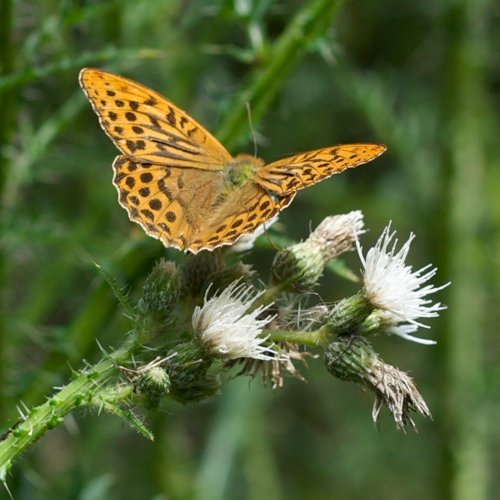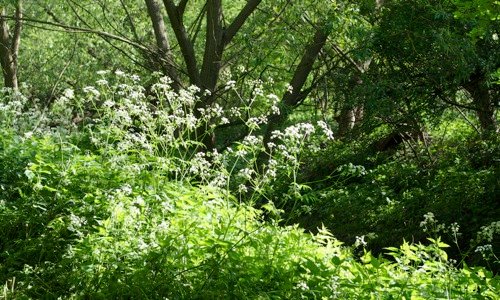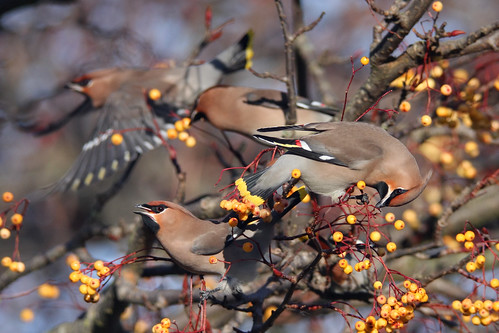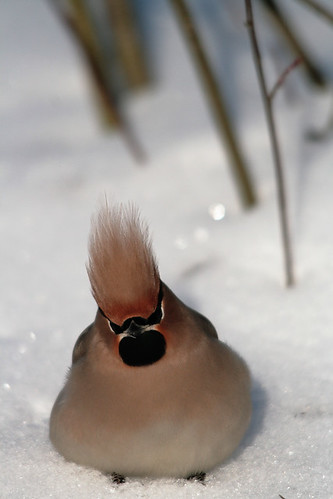2010 wasn’t a vintage wildlife year for me. I didn’t go anywhere exotic, or even spend much time outside the M25. My longest wildlife-watching trip was to the car park of B&Q in Folkestone.
Despite that, I did manage to rack up some pretty good bird sightings, but it was pretty slim pickings for the minor categories.
Best Plant
Clearly it’s ludicrous that I can’t think of any stand-out plants for the year. After all, they’re not difficult to see. But nothing springs to mind.
Best Fungus
I don’t think I’ve had this as a category before, but this was a good year for fungi, and I saw loads of them. However I made the important discovery that actually identifying them is almost completely fucking impossible. This one at least is easy; Shaggy Inkcap:

Best Insect
It was nice to see a few seven-spot ladybirds in the garden, because it meant that the Harlequin ladybirds haven’t completely eliminated them. There was the parasitic wasp Gasteruption jaculator, which was a neat little beastie. And apart from the the usual mix of butterflies and dragonflies, there were a couple of stand-out species. One was a very battered convolvulus hawkmoth brought in by the cat: which means that I have now seen this species exactly twice, and in both cases it was because the cat brought them in.

But the species of the year, both because it’s a dramatic-looking thing and because it was so unexpected that it turned up in the garden: Silver-washed Fritillary (in the name of full disclosure: that picture was taken by me, but not this year and not in the garden). One of Britain’s largest butterflies. And not exceptionally rare, but still a complete surprise, especially as it’s mainly a woodland species.
Best Invertebrate (other), Best Fish, Best Reptile
Best Fish and Best Reptile are often quite difficult categories, of course. But it’s a bit embarrassing that I can’t think of anything for Best Invertebrate (other), which is such a big group of organisms. Obviously I have seen various spiders and slugs and things in 2010, but none I can think of that seem worth a namecheck.
Best Amphibian
This was the year of toads in the garden (i.e. Common Toad, Bufo bufo). There have been the occasional toad before, but this year they were all over the place — commoner than frogs. Which was nice.
Best Mammal
Discounting your basic urban vermin (foxes, rats, mice, squirrels) and the remnant of hedgehog I found in the local woods, I think I saw five species of wild mammals this year.
In January when it was VERY COLD, there was a particularly active and fearless stoat at Rainham Marshes which was scurrying around near and on the pedestrian walkways. Stoats are always a pleasure to watch, bouncy manic furry wiggly critters that they are. And I saw some deer: muntjac, fallow deer, red deer and Sika — but only the muntjac counts as ‘wild’, I think, as the others were in deer parks.
And I went on a bat walk in the local park, where we saw three species of bat: Daubenton’s bat, Common Pipistrelle, and my mammal of the year for 2010 which is… Soprano Pipistrelle.
The best thing about the Soprano Pipistrelle is the brilliant name. Common and Soprano Pipistrelles were only split into separate species in 1999; there are apparently various differences of food and habitat, but they were initially split because the Soprano Pipistrelle has a higher-pitched call: 55kHz to the Common’s 45kHz.
Best Ecosystem
Because most of my birding has been in London this year, all my best sightings have been in artificial habitats: a wetland on the site of an old water-treatment plant, a marsh which was formerly an army firing range, a canal and reservoirs originally built to supply water and transport for industrial north London, Victorian suburban parks and ancient royal deer parks, all of them now managed as public amenities and for the benefit of wildlife by various conservation charities, by local councils, and by central government agencies.

Now I know that ‘nature reserve’ is not actually a distinct ecosystem. But fuck knows, if you live in a densely populated, post-industrial, intensively farmed place like southern England, and you have any interest in nature, you owe an intense debt of gratitude to the people who create and manage little pockets of land for the benefit of wildlife instead of turning them into golf courses and housing estates.
Specifically, thank you to: the RSPB, the Wildfowl & Wetlands Trust, the Lee Valley Regional Park Authority, Southwark Council, the Royal Parks, London Wildlife Trust and anyone else who puts in the hard work to make sure these animals have somewhere to live.







